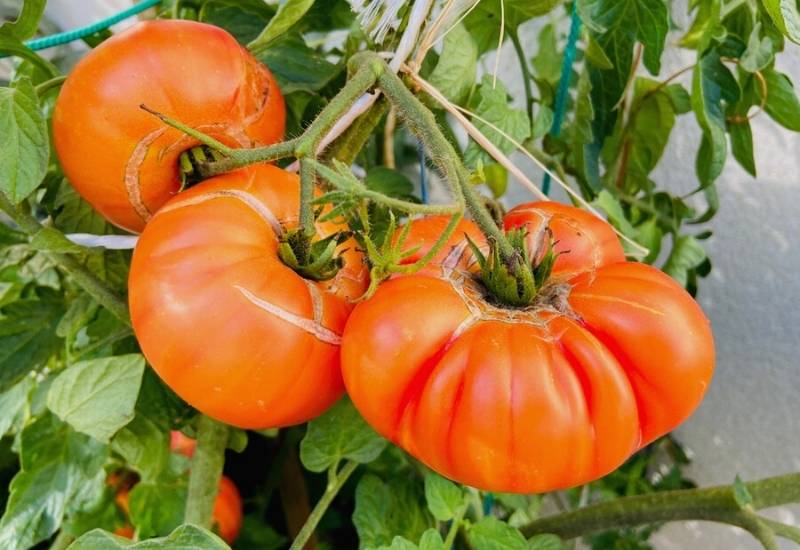
Most tomato growers will have experienced their previously healthy, plump tomatoes suddenly develop large splits through their skin or in circles patterns around the fruit.
Tomatoes splitting on the vine can be extraordinarily frustrating, especially since it creates an opening for disease or pests to contribute to the quick demise of that particular tomato.
But what makes your tomatoes split or crack on the vine? Essentially, tomatoes will split or crack from sudden changes in soil water content, which can cause the inner fruit to grow and expand more quickly than the skin of the tomato, causing it to break (or split) open.
Some cases of split tomatoes may be worse than others, and sometimes it is just a cosmetic issue that won’t affect the actual fruit.
In a worst case scenario, your tomato will begin to rot or pests may hatch inside the opening and larvae could emerge.
Either way, it is certainly better to avoid splitting when you can, particularly since there is no remedy or cure for split tomatoes. But what exactly is it that causes tomatoes to split or crack, how to prevent your tomatoes from cracking and whether cracked tomatoes are safe to eat or not.
Why Do Tomatoes Split and Crack?
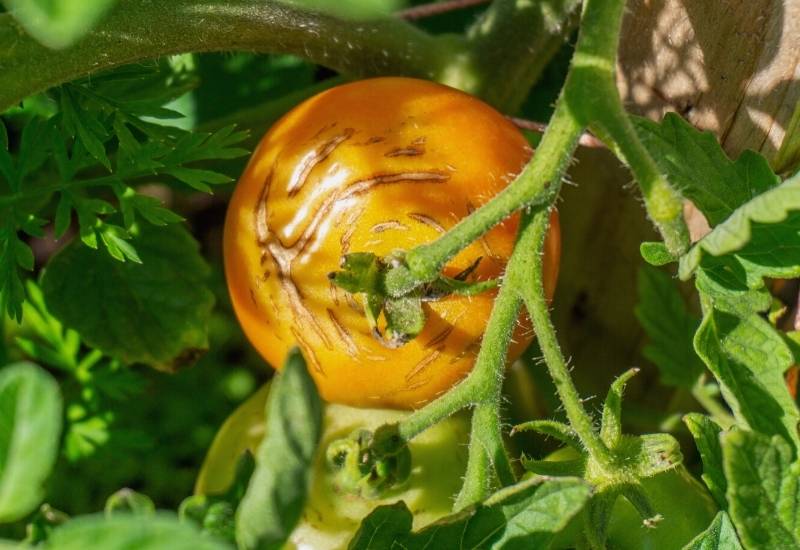
Just like your skin, the thin skin of tomatoes will become dry during a period with little water. This may not even be noticeable, but when they suddenly receive a large amount of water (like during a rainstorm) the fleshy insides of the fruits will suddenly become bloated with water and the already dry skin of your tomatoes will stretch and crack.
Tomatoes can split at any point, green or ripe, but it may be more common at a certain stage depending on the weather patterns and climate of your region.
Often, you will find split tomatoes in your garden after a particularly heavy rain event, but it is also possible for a gardener to trigger the splitting from irregular irrigation patterns.
There are two types of splits that can occur on tomatoes.
It may feel as though there is not much you can do about controlling a heavy rainfall after a period of drought, but there are a number of effective prevention strategies that can help you avoid this annoying split tomato problem.
How To Prevent Your Tomatoes From Splitting
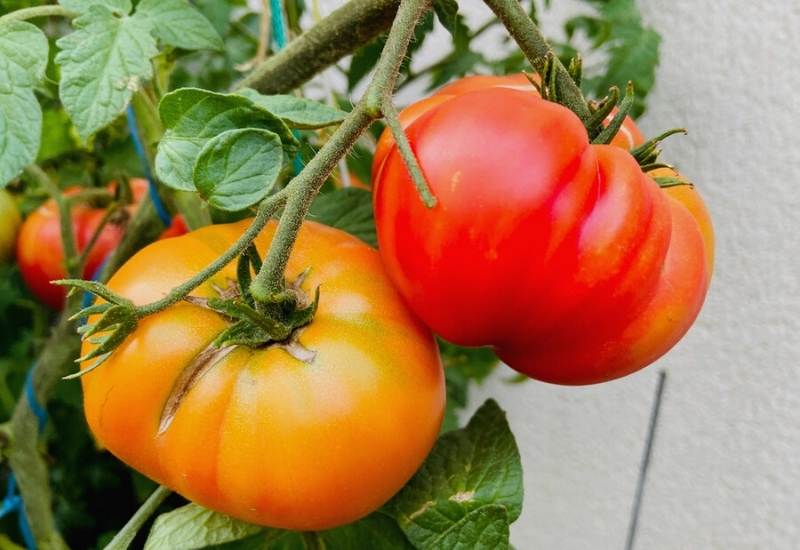
Since the primary cause of splitting tomatoes is irregular water patterns, much of the prevention is focused on creating a soil environment that won’t be too shocked by drought or heavy rainfall.
Here are 5 tips on how to prevent your tomatoes from splitting as they ripen:
Mulch Around Tomato Plants
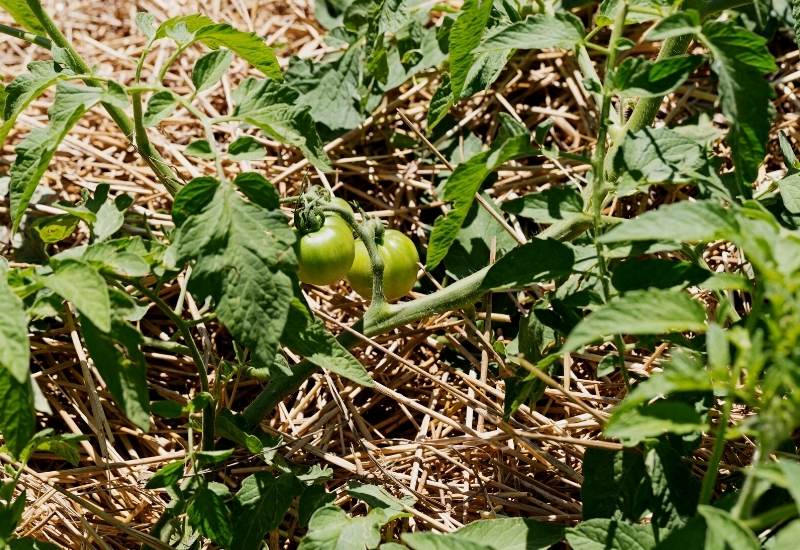
Mulching your tomato beds can offer many benefits, one of which is better soil water retention.
Most mulching materials (wood chips, straw, compost) cool the soil surface and can prevent water from immediately evaporating after irrigation on a hot day.
A one inch layer of mulch will also provide a kind of slow release effect, where moisture slowly seeps into the soil and roots of the plant more steadily.
This prevents your tomato plants from entering periods of drought, and makes them less susceptible to cracking once that drought is broken.
Create A Regular Watering Routine For Your Tomato Plants
You should water your tomatoes around a couple times a week with a good, deep drink, but you may have to adjust this to be slightly more or less depending on the climate of your region.
Try to avoid overhead irrigation and use drip irrigation or bladders to get water right to the roots.
Watering with sprinklers on a hot day can be counterproductive, as most of the water will evaporate mid air and your plants could still go into drought.
Ensure That Your Soil Has Good Drainage
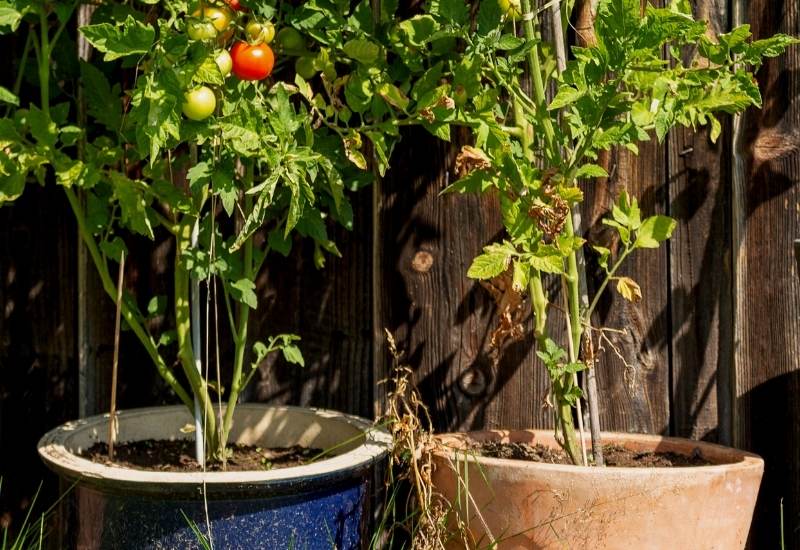
Consider planting your tomatoes in containers with drainage holes or raised beds if the soil on your property is very boggy.
This can make a big difference when it comes to keeping a consistent moisture level for your tomato’s roots, as otherwise a heavy rainfall could completely flood your plant and create bursting tomatoes that will quite literally split at the seams.
Grow Crack-Resistant Tomato Varieties
Maybe you live in an area that is very prone to inconsistent weather and you have experienced splitting tomatoes more times than you can count.
Try buying crack resistant tomato varieties, some of which may have skin that is naturally more elastic, and some that have been bred to resist splitting.
There is no 100% guarantee these tomatoes won’t split, but research shows it is significantly less likely. ‘Sweet Million’ and ‘Big Beef’ are both popular crack resistant tomatoes.
Plan Ahead And Check Weather Forecasts
If you are noticing a particularly hot and dry spell heading your way, increase your irrigation schedule accordingly to avoid drought.
Similarly, if a big rain event is forecasted then pick any tomatoes that are almost ripe or ripe and let them finish the process indoors where they will be safe from splitting. This can really reduce the amount of fruits that are affected!
Can You Eat Split Tomatoes?
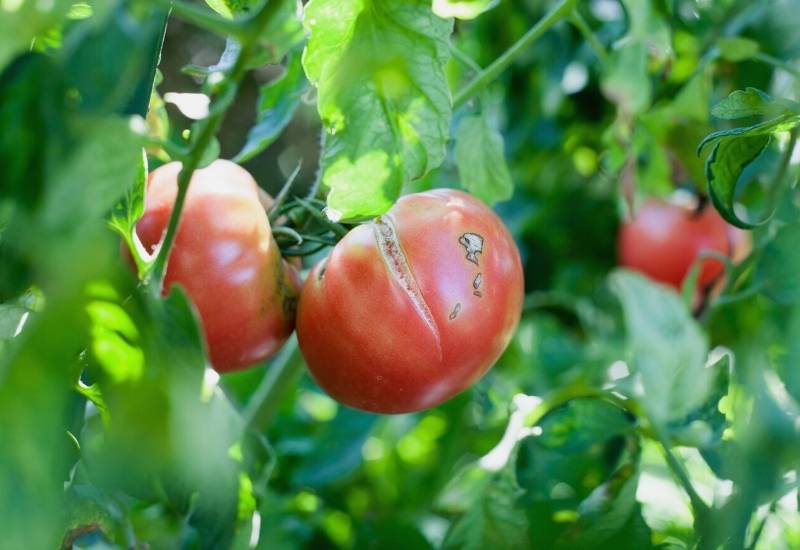
If you are reading this article a little too late and you already discovered your tomatoes have split, not to worry! You can certainly still eat cracked tomatoes, and in some cases you can even leave them on the vine to finish ripening.
It really depends on how severe the split is, and whether it has fully exposed the inner flesh of the fruit or if it is just a surface crack that hasn’t broken the seal.
If the cracks are gooey and juicy, which is almost always the case with radial cracks, harvest and bring them inside.
Try to eat them that night or in the next couple days, as they won’t last long. Even if they are green, you will need to harvest them if they have bad splits – try making fried green tomatoes!
If you can see cracks but they aren’t gooey and look well sealed, you can leave them on the plant to finish ripening and they should be fine. This is more common with concentric cracks, which can develop a stitched, Frankenstein-like seam.
Just pay extra attention to them to make sure they don’t crack further and create an opening for pests or disease pathogens to enter.
When in doubt, harvest split tomatoes earlier rather than later, and they are always a great option for making sauce and salsa!

Written By
Maya
Maya is a freelance content writer and avid gardener currently based in Sweden. She gained her BA in Environment and Geography in Canada, which is also where she first learnt about the detriments of the industrialized agricultural system. During the summer she began farming through the WWOOF program, and over the next six years has continued to grow and learn at a number of organic farms and gardens across the US and Canada. She is passionate about the role of regenerative agriculture in wildlife conservation and climate change mitigation, and thinks growing your own food is a key part of revolutionizing the system. In her free time she likes to read, garden, and pet nice dogs.
